-
Are you in Other? If not, please update your location below.
-
Other
- Services
- Class Actions
- No Win No Fee
- Our Firm
- Resources
- Contact Us

Written by:
Rita FurfaroBeing involved in a traffic accident can be a traumatic experience, often leading to physical injuries, emotional distress, and financial hardship. If you’ve been injured in a car accident in Victoria, you may be entitled to claim compensation through the Transport Accident Commission (TAC).
This comprehensive guide will walk you through the process of claiming car accident compensation, outlining who can claim, the types of benefits available, and how to navigate the injury claims process effectively.
In Victoria, the Transport Accident Commission (TAC) is responsible for managing the state’s transport accident scheme. The TAC’s primary role is to provide support and compensation to individuals injured in transport accidents, regardless of fault.
The Transport Accident Act 1986 outlines the scope of benefits that the TAC can offer. Understanding these parameters is crucial for anyone considering making a claim.
The TAC can pay for:
However, the TAC does not cover:
The TAC scheme covers a wide range of individuals affected by transport accidents in Victoria.
You may be eligible to file a TAC claim if you’re a:
People from other states can also file claims if:
It’s important to note that even if you were partially or fully at fault for the accident, you may still be eligible for certain benefits under the TAC scheme.
The TAC offers different types of compensation and support depending on the nature and severity of your injuries.
This may include:
1. Medical and allied health services
In the first 90 days after your accident, the TAC can cover certain treatments and services without needing prior approval, as long as they are recommended by your doctor or health professional and relate to your accident injuries.
These services may include:
After the initial 90 days, or for treatments and services not listed above, you or your providers will need to obtain TAC approval.
2. Income support
If you’re unable to work due to your injuries, you may be eligible for income replacement payments for up to 18 months. This benefit is designed to help you while you recover and work towards returning to employment.
3. Loss of Earning Capacity (LOEC)
The TAC can pay a LOEC benefit after 18 months if your injury prevents you from working. This benefit continues if your impairment remains over 50%. LOEC is calculated based on the difference between your pre-accident and post-accident earning capacity. Factors like injury severity, rehabilitation potential, skills, ages, and available jobs are considered in determining LOEC.
4. Impairment benefits
You may receive a one-off lump sum payment if your transport accident caused a permanent physical or psychological condition. This payment is for impairments assessed at 11% or more and is in addition to other benefits. Children under 18 may also qualify for a lump sum payment or a weekly benefit called “Minors Additional Benefit”.
5. Safety Net Income Benefits (SNIB)
This SNIB is available for clients with severe injuries—with an impairment score of 50% or more—who return to work but then are unable to continue working. It is for those who would qualify for LOEC payments, but can no longer sustain their employment as they have been either terminated from their job or unable to sustain self-employment. Eligibility for SNIB is reassessed every five years.
6. Dependency benefits
If you’re the dependent spouse or child of someone who has died as a result of a transport accident, you can claim financial support. Support may include funeral expenses up to $18,860, travel and accommodation costs for attending services, and family counselling up to $20,020.
For those who lost a contributing spouse or partner, TAC offers lump sum payments of up to $224,370 and ongoing benefits. Childcare and household support are also available, and dependent children may receive lump sum payments, fortnightly payments, and educational allowances.
7. Home and vehicle modifications
If your injuries impact your ability to drive or use your vehicle, TAC can assist with modifications to help you get in and out of your vehicle, drive, and transport mobility aids. Additionally, TAC can sometimes contribute towards the cost of purchasing a vehicle in Australia to support your needs. They do this to help support greater independence and mobility.
8. Common law damages
In cases of serious accident injury, you may be eligible to pursue additional compensation through a common law claim. However, to qualify for common law compensation, another party must be at fault (or partially at fault) for the accident, and your injuries must meet the legal criteria for a ‘serious injury.’
A qualified personal injury lawyer can help you determine if you’re eligible for a common law claim.
When you’ve been injured in a transport accident, navigating the claims process can be daunting. At GMP Law, we’re here to guide you through each step, ensuring you have the support and information you need during this challenging time.
Here’s a comprehensive overview of the TAC claim process in Victoria.
Step 1: Gather essential information
In the aftermath of an accident, it’s important to collect as much information as possible.
This includes:
Step 2: Document your injuries
Proper documentation of your injuries is vital for your claim.
Collect at least one of the following:
Remember, vague descriptions like “unfit for work” or “medical condition” aren’t sufficient. Clear, detailed documentation of your accident-related injuries is essential to avoid delays in your claim.
Step 3: Prepare financial information
If your injuries have resulted in more than five days off work, gather:
Step 4: Lodge your TAC claim
With all the necessary information in hand, you can lodge your claim through one of these methods:
Important considerations:
Step 5: Claim assessment
Once your claim is lodged, the TAC will assess it based on the provided information. They may request additional details or medical examinations if needed.
Step 6: Claim decision
The TAC will inform you of their decision. If accepted, they’ll outline the benefits you’re eligible for, which may include medical treatment coverage, income support, and other services.
Step 7: Ongoing management
For accepted claims, the TAC will work with you and your healthcare providers to manage your treatment and recovery. This may involve:
Step 8: Additional compensation considerations
Depending on the severity of your injuries and their long-term impact, you may be eligible for:
The amount of compensation you receive through a TAC claim varies widely.
A few factors can affect your claim, including:
Average payouts by type of compensation
The following table shows the average payouts for different types of compensation for TAC traffic accident claims.
Medical expenses | The TAC covers reasonable medical expenses related to your injuries. There’s no set limit, but treatments must be sensible and necessary. |
Loss of earnings capacity | For the first 18 months post-accident: Up to 80% of your pre-accident earnings, capped at $1,620 per week (as of FY2024/2025).
After 18 months: About 80% of your pre-accident earnings, capped at $1,260 per week. |
Impairment benefit | For permanent injuries, compensation ranges from $9,350 for an 11% impairment to $427,160 for a 100% impairment (as of FY2024/2025). |
Common law damages | For serious injuries, you may be eligible to sue for additional compensation. Damages can exceed $1 million in severe cases but are capped at:
|
It’s important to note that these figures are subject to change and should be verified with the TAC or a personal injury lawyer. Each case is unique, and actual compensation can vary significantly based on individual circumstances.
Yes, there are time limits for filing TAC claims:
Victoria’s TAC scheme is a no-fault system, meaning you can receive benefits regardless of who was at fault for the accident. However, fault can play a role in certain aspects of your claim, particularly for common law damages.
Consider engaging a solicitor if:
When you reach out to GMP Law about your claim, we will promptly begin assessing the evidence and explaining your options. Our initial consultation is free of charge and without obligation. If we determine you have a viable case for compensation, we will proceed with your claim on a no-win no-fee basis.
We assist with all aspects of your claim, including common law claims for motor vehicle accidents through TAC. Our team provides ongoing support throughout the process, including handling appeals if necessary. We also help gather and present robust medical evidence to strengthen your case.
For detailed guidance on starting a claim, consult our comprehensive guide to motor vehicle compensation claims.

Special Counsel Rita Furfaro is a NSW-accredited specialist in personal injury law, with a particular focus on Motor Vehicle Accident (MVA) claims. Rita's expertise as a skilled litigator, combined with her empathy for clients' unique situations, enables her to deliver exceptional results.
In the spirit of reconciliation GMP Law acknowledges the Traditional Custodians of country throughout Australia and their connections to land, sea, and community. We pay our respects to their Elders past, present, and emerging, and extend that respect to all Aboriginal and Torres Strait Islander peoples today.

Your location is currently:
Please wait while you are redirected to the right page...